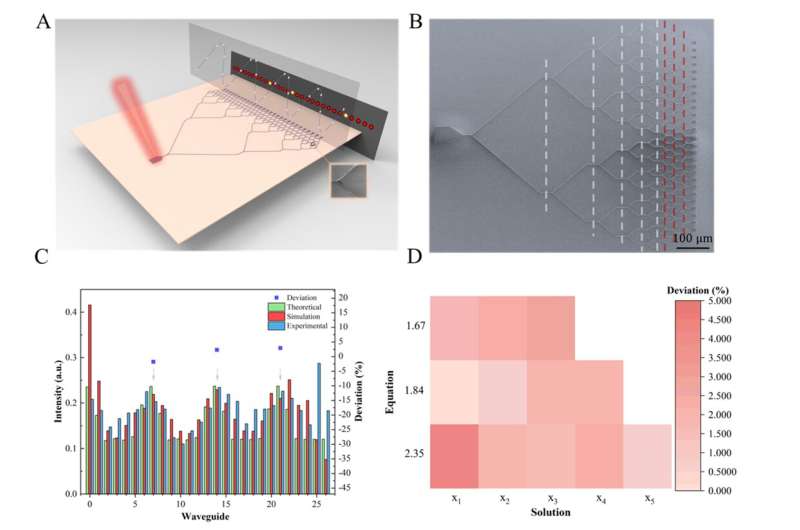All-optical computing based on convolutional neural networks

In a new publication from Opto-Electronic Advances the research group of Professor Xiaoyong Hu and Professor Qihuang Gong from School of Physics, Peking University, China, propose a new strategy to realize ultrafast and ultralow-energy-consumption all-optical computing chip scheme based on convolutional neural network (CNN), which supports the execution of multiple computing tasks.
With the rapid development of advanced engineering computing, economic data analysis and cloud computing, the demand for ultra-high speed and energy-efficiency computing is growing exponentially. Due to the limited data communication bandwidth between memory and processor, the inherent RC delay of the integrated circuit, and the heat dissipation caused by resistance loss in the electronic circuit, the dominant computing platform, namely the traditional electronic signal processor under von Neumann architecture is difficult to achieve high speed and low energy consumption at the same time.
All optical computing using photons as information carrier provides a potential alternative to the traditional electronic signal processor. However, there is an inherent trade-off that the larger nonlinear coefficient can only be at the expense of the slower response time. This trade-off poses a major challenge to the construction of integrated photonic processors based on von Neumann architecture, which usually requires complex heterogeneous integration of various photonic devices in a single chip. Therefore, it is urgent to explore new architecture and unconventional all-optical computing scheme.
The research group of Prof. Xiaoyong Hu and Prof. Qihuang Gong from School of physics, Peking University, proposes a new strategy to realize ultrafast and ultralow-energy-consumption all-optical computing chip scheme based on convolutional neural network (CNN), which supports the execution of multiple computing tasks. The optical CNN consists of cascaded silicon Y-shaped waveguides with side-coupled silicon waveguide segments designed to control the amplitude and phase of light in the waveguide branches. As a proof-of-concept, they experimentally implemented the network design through several computation tasks including transcendental equations solvers, multifunctional logic gate operators, and half-adders. The time-of-flight of light through the network structure corresponds to an ultrafast computing time of the order of several picoseconds with an ultralow energy consumption of dozens of femtojoules per bit. Their approach can be further expanded to offer the possibility of parallel computing using wavelength multiplexing based on non-von Neumann architectures and thus paves a new way for on-chip all-optical computing.
cos 2kx + 4 = tan (kx)
For example, a transcendental equation solver has been achieved to solve the above equation with high accuracy with a maximum deviation less than 5%, and in most cases the deviations are less than 3%. The accuracy of the solution can be improved by increasing the number of output waveguides in theory. Besides excellent solution accuracy, the all-optical equation solver also features ultrafast (The time-of-flight of light passing through the characteristic structure is ~1.3 ps) and energy-efficiency computation (~92 fJ/bit ). Stability analysis of their network further demonstrates its high fault tolerance to defects such as weight deviation and waveguide damage. This work therefore points to a promising direction for next-generation all-optical computing systems.
More information: Kun Liao et al, All-optical computing based on convolutional neural networks, Opto-Electronic Advances (2021). DOI: 10.29026/oea.2021.200060
Provided by Compuscript Ltd




















